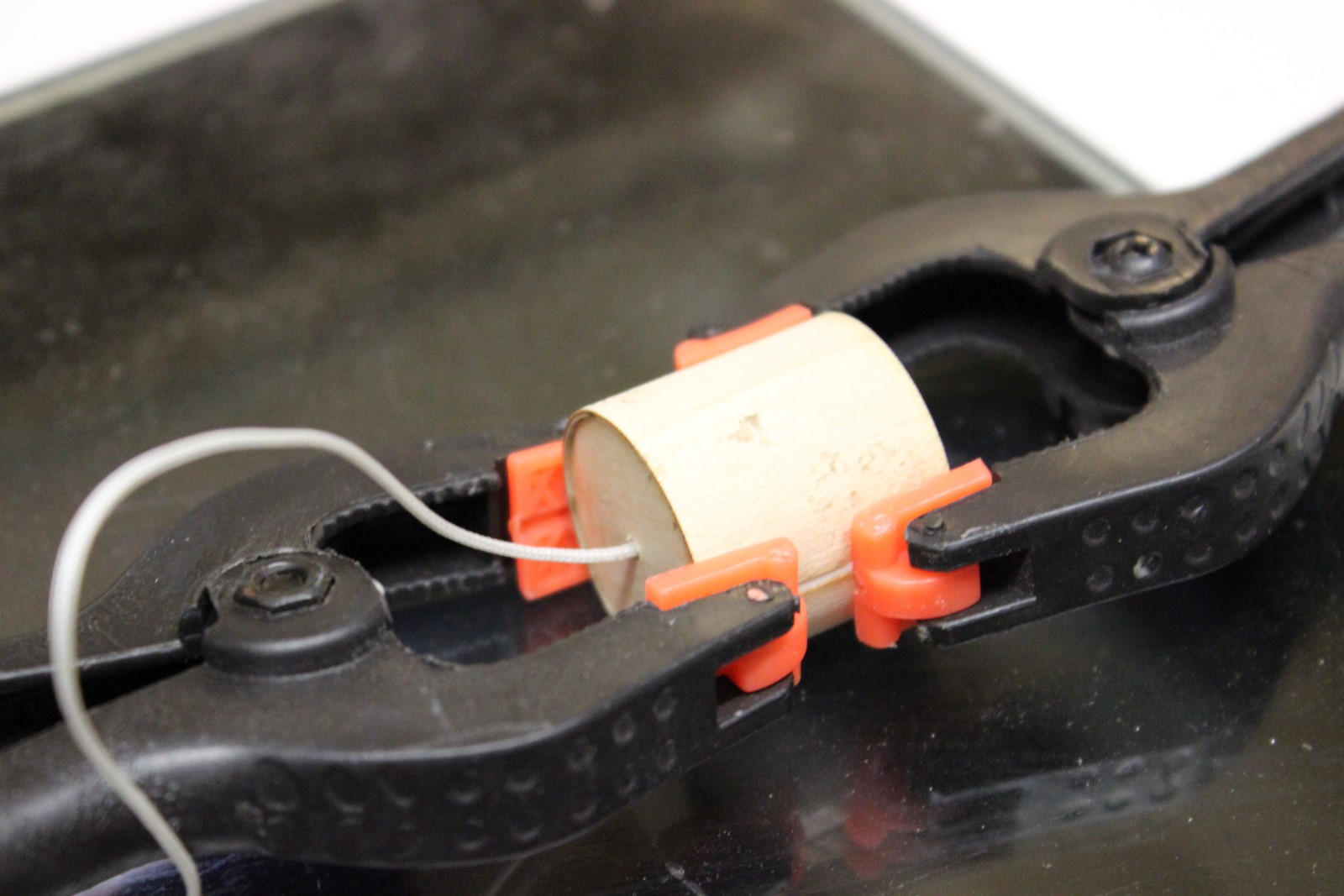DIY Heng Lamp

.JPG)
.JPG)
.JPG)
The HENG Balance lamp just successfully funded on Kickstarter, the design is pretty cool and unique so we decided to make a copy of it. At it's heart it's just an LED lamp with a simple micro switch to turn it on and off, we had all the parts to hand and a laser cutter to make the more complicated bits. The lower magnet is pulled towards the upper magnet and that turns on the micro switch.
The materials used:
6mm Poplar Plywood
and most importantly Flexible Maple Veneer Sheet
For the electronics we used:
12V LED strip
Finally some Lead Shot to weight the base of the lamp
All of the drawings for the laser cut parts are included in the svg file which was made with inkscape, if you're having trouble opening it in your CAD package why not try downloading inkscape and resaving it in a different format.
Downloads
Floating Corks

.JPG)
.JPG)
.JPG)
.JPG)
.JPG)
.JPG)
The official Heng design has wooden balls suspended in the middle of the frame, sadly they can't be laser cut so instead of waiting for balls to arrive in the post we compromised with wooden corks that could be produced immediately. While we were busy testing the feasibility of the design we forgot to take any photos on the internal construction. The 3D render shows the way the layers were stacked up to give us space for the magnets and a knot on the end of the string, all safely tucked away inside the cork.
Once the cork was glued together it was skinned with the flexible maple veneer to give it a clean finish and hide the laser cut layers. Two corks were made, one was suspended from the top of the oval, the other was attached to the micro switch in the base as described in the next step.
Oval Frame
.JPG)
.JPG)
.JPG)
.JPG)
.JPG)
.JPG)
.JPG)
The main body of the lamp is a large oval shape with a recess for an LED strip. Using a laser cutter the best way to make this shape is to build it up using several layers of material. The two outer sides were cut from 6mm ply, the next step in creates another recess which the polypropylene will sit on, finally the two inner layers were also cut from 6mm ply and are where the LEDs sit.
All the layers were glued together and clamped into place, there is a gap at the bottom of the oval where it will sit over the base. The LED's come with their own adhesive strip but we applied another layer of carpet tape which is much stronger. The LED strip was stuck around the inside of the oval ensuring that they were evenly spaced on both sides. Wires were soldered onto the strip at the bottom end of the ring.
The oval ring was skinned on the outside with the flexible maple veneer, this was a simple strip 30mm wide ensuring that the grain of the veneer was aligned horizontally so it flexed in the right direction. Many clamps were used to hold the veneer in place while the glue dried.
Base Sections
.JPG)
.JPG)
.JPG)
.JPG)
.JPG)
.JPG)
.JPG)
.JPG)
.JPG)
The base was made from thirteen stacked disks, this gave a hollow cavity suitable for housing the electronics.
The top two layers of the base had a slot cut into them to hold the rest of the oval in place. The three sections that make up these layers were aligned by leaving them inside the frame they were cut from. There is a hole right in the centre of these layers where the string is threaded through. There should also be a hole for the LED wiring to be threaded through the side of the base, this was drilled into the side of our base but the drawing has been modified to accommodate this.
The design of the lamp looked like it would be relatively top heavy so we decided to weight the base of the lamp to ensure that it doesn't topple over. Two 6mm rings form a cavity which can be filled with lead shot. The rings were capped with 3mm disks, this keeps the weight as low as possible.
The oval rings were glued into the base and the base was skinned with the wood maple veneer.
Wiring the LED's
.JPG)
.JPG)
.JPG)
.JPG)
.JPG)
.JPG)
The wiring for the lamp is rather simple, the power supply is connected to the LED's and the positive rail is switched through the normally open contact of the micro switch. The metal lever is bent into a hook shape and the string from the lower cork is passed through the base and tied onto it. The switch was mounted on a small piece of wood and the whole arrangement was glued into the base. Cable ties were used to provide some strain relief on the power cable should anyone accidentally trip over the wire.
Now when the string is pulled, it activates the switch and turns the lights on. There is definitely a better way to do this enclosure rather than gluing it all shut, perhaps using something like this captive nut arrangement.
The polypropylene light diffuser pressed into place, wedging itself between the outer wooden layers and resting on the recess. Polypropylene can be laser cut but because we just needed straight strips we chose to do this with a craft knife instead.
So that is our DIY version of the Heng Balance Lamp, 4 hours from seeing the original to making our own copy, if you make your own we'd love to see photos and perhaps you could share the improvements that you make too.